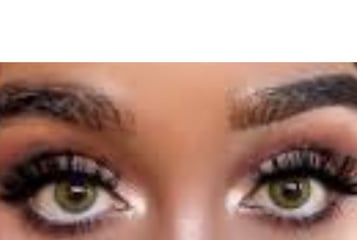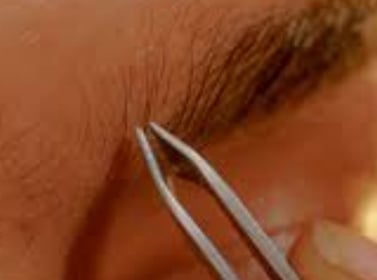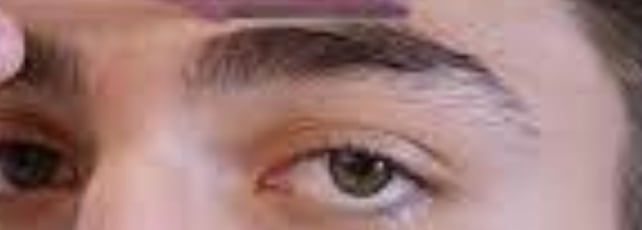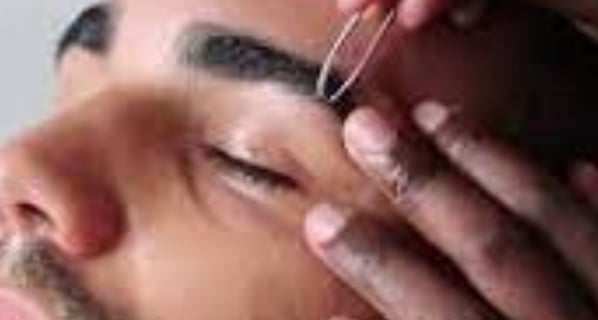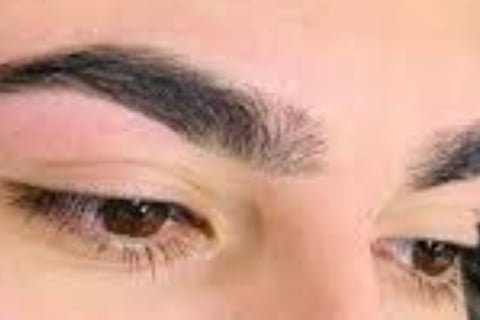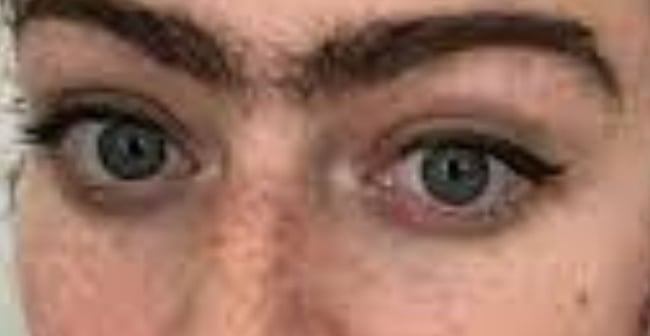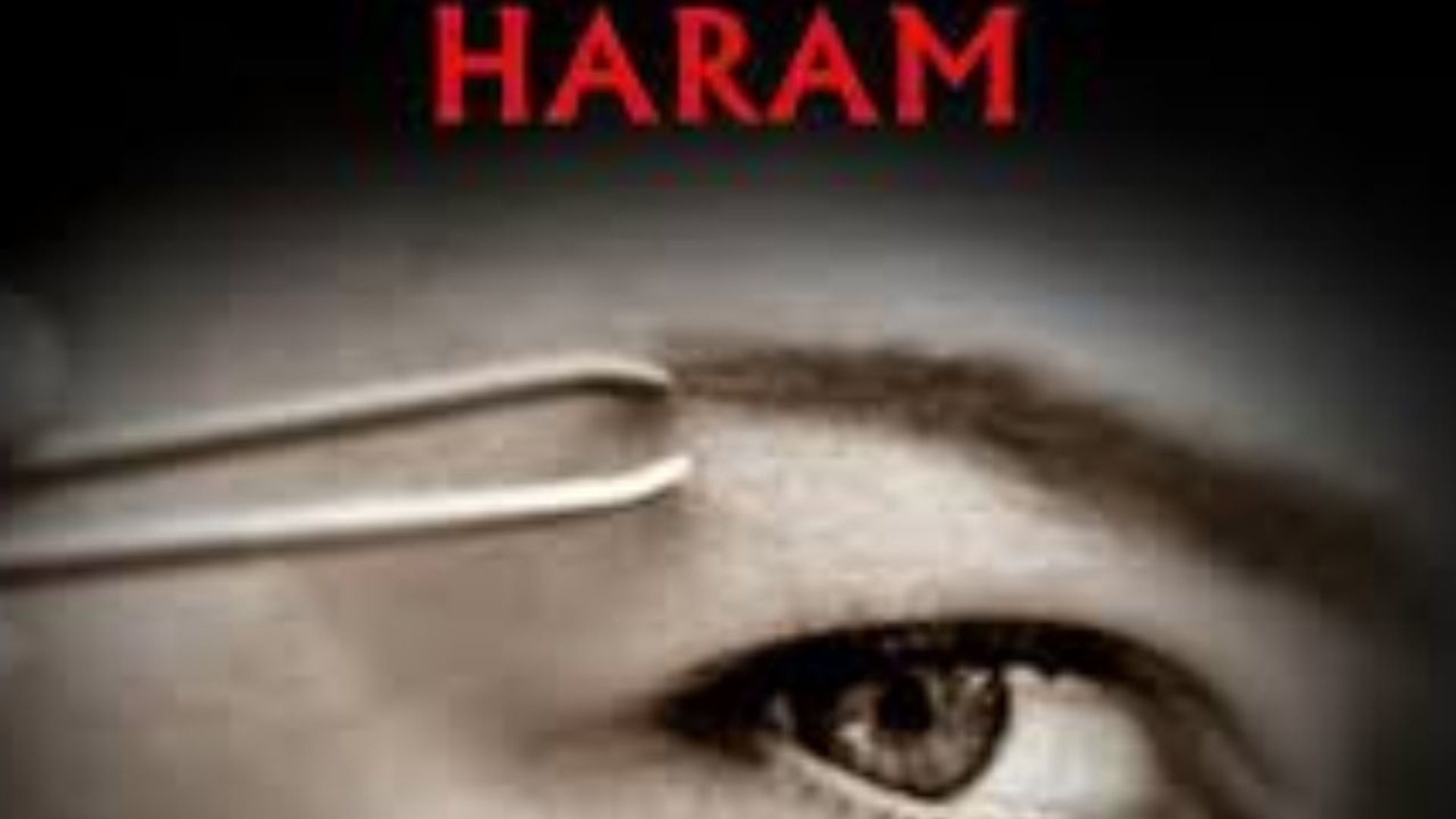
Islamic Ruling on Eyebrow Plucking (Namṣ)
Discover the Islamic ruling on eyebrow plucking (namṣ) for both men and women. Learn about the nuanced interpretations by scholars regarding intent and necessity in this practice.
GUEST SPEAKER
Ms. Iman Al-Warraqi
4/16/202510 min read


Islamic Ruling on Eyebrow Plucking (Namṣ)
The ruling on namṣ (eyebrow plucking) is a significant topic for Muslim women and men, as it involves altering the eyebrows for aesthetic purposes.
This article explores the Islamic perspective on namṣ, including its definition, evidence for prohibition, permissible cases, scholarly opinions, and its cultural context, ensuring a deep dive into the topic while optimizing for SEO with keywords like "Islamic ruling on eyebrow plucking," "namṣ in Islam," and "is eyebrow plucking haram."
What Is Namṣ in Islam?
Namṣ refers to the act of plucking, trimming, or removing eyebrow hair using methods such as tweezing, shaving, threading, or laser for beautification purposes, not for medical or corrective reasons.
In Islamic jurisprudence, namṣ is often associated with altering Allah’s creation, raising questions like, "Is eyebrow plucking haram in Islam?"
This practice is distinct from removing facial hair for hygiene or medical necessity.
Evidence for the Prohibition of Namṣ in Islam
The prohibition of namṣ is rooted in clear Islamic texts, including the Qur’an and Hadith, which emphasize preserving Allah’s creation.
Below are the primary sources:
1. Hadith Evidence
The Prophet Muhammad (peace be upon him) said:
"Allah has cursed those women who practice tattooing and those who get tattooed, those who pluck their eyebrows (nāmiṣāt), and those who have their eyebrows plucked (mutanammiṣāt), and those who file their teeth for beauty, altering Allah’s creation." (Sahih al-Bukhari and Muslim)
Nāmiṣāt: Those who pluck eyebrow hair.
Mutanammiṣāt: Those who request others to pluck their eyebrows.
The term "cursed" indicates that namṣ is a major sin (kabīra) due to its association with changing Allah’s creation for cosmetic reasons.
2. Qur’anic Evidence
Allah says in the Qur’an:
"And I will mislead them, and I will arouse in them sinful desires, and I will command them so they will slit the ears of cattle, and I will command them so they will change the creation of Allah." (Surah An-Nisa, 4:119)
This verse highlights that altering Allah’s creation for non-essential reasons, such as cosmetic eyebrow plucking, is prohibited and aligns with the influence of Shaytan.
Why Is Namṣ Considered Haram?
Namṣ for beautification is deemed haram because:
It involves altering Allah’s creation without necessity, which contradicts submission to divine wisdom.
It may involve deception (ghish), as it changes one’s natural appearance.
The Hadith’s strong language ("cursed") underscores its seriousness, discouraging both men and women from engaging in it for aesthetic purposes.
When Is Namṣ Permissible for Women?
Islamic scholars outline specific exceptions where namṣ is allowed, based on necessity or corrective purposes:
Correcting Disfigurement: If eyebrow hair is excessively thick or causes visible deformity, removing the necessary amount is permissible to restore a natural appearance.
Medical Necessity: Namṣ is allowed if required for medical treatment, such as in cases of skin conditions or surgical procedures.
Removing Unnatural Facial Hair: Removing hair resembling a beard or mustache on women is recommended (mustahabb), as it is not considered part of natural eyebrow hair.
The permissibility of namṣ does not depend on societal views or a spouse’s approval but on whether it addresses a legitimate need without altering Allah’s creation for vanity.
Islamic Ruling on Namṣ for Men
The ruling on namṣ applies equally to men. Plucking eyebrows for cosmetic purposes is haram, as it involves changing Allah’s creation.
However, men may remove eyebrow hair for medical reasons or to correct disfigurement, similar to women.
Scholars emphasize that the prohibition of namṣ is gender-neutral when the intent is beautification.
Scholarly Opinions on Namṣ
Islamic scholars across schools of thought (madhhabs) generally agree on the prohibition of namṣ for cosmetic purposes,
though nuances exist:
Hanbali and Shafi’i Schools: Strictly prohibit excessive namṣ that alters Allah’s creation, emphasizing the Hadith’s clear prohibition.
Maliki School: Permits removing minimal "excess" hair to enhance appearance without drastically changing the eyebrow’s natural shape.
Contemporary Scholars: Some modern scholars allow minor shaping if it aligns with cultural norms and does not involve significant alteration, but the majority uphold the prohibition for cosmetic namṣ.
Does Namṣ Enhance Beauty?
The debate over whether namṣ enhances beauty is subjective and varies across cultures and individuals.
Plucking eyebrows may balance facial features or highlight certain traits, but overly thin or artificial brows can appear unnatural.
Conversely, thick, natural eyebrows are often celebrated for their authenticity and cultural significance, as seen in trends inspired by figures like Cara Delevingne.
However, excessive namṣ can lead to permanent hair loss or skin damage, reducing long-term aesthetic appeal.
From an Islamic perspective, true beauty lies in adhering to divine guidelines and embracing one’s natural form.
The Prophet’s prohibition suggests that namṣ for vanity does not add authentic beauty but instead introduces spiritual and ethical concerns.
Cultural Perspectives on Eyebrow Grooming
Eyebrow grooming practices vary widely across cultures, reflecting diverse values and aesthetics.
Below is a deeper exploration of how namṣ and eyebrow styling are perceived globally, optimizing for SEO with terms like "eyebrow grooming in different cultures" and "cultural beauty standards."
1. Indian Culture: Spiritual Artistry
In India, eyebrow grooming is tied to spiritual harmony and the concept of shanti (inner peace).
Henna is used not only for hair removal but also as a symbol of blessing during religious ceremonies and weddings.
Thick, precisely shaped eyebrows, inspired by deities like Lakshmi, symbolize beauty and prosperity.
Modern techniques like microblading blend tradition with contemporary trends, maintaining cultural significance.
2. Chinese Culture: Balance and Harmony
In ancient China, eyebrow grooming reflected the philosophy of yin and yang.
During the Tang Dynasty (618–907 CE), women shaved their eyebrows and drew delicate shapes with black ink, symbolizing humility and imperial elegance.
Today, straight, tapered eyebrows are favored, believed to signify intelligence and clarity in Chinese face-reading traditions.
3. Western Culture: Evolving Trends
Western eyebrow trends have shifted dramatically:
Medieval Era: Women shaved eyebrows entirely to emulate the purity of the Virgin Mary.
1990s: Thin eyebrows, popularized by celebrities like Drew Barrymore, symbolized rebellion.
Modern Era: Thick, natural eyebrows, inspired by Cara Delevingne, promote self-acceptance and reject artificial perfection.
4. Arab Culture: Balancing Faith and Identity
In the Arab world, namṣ sparks debate due to the Prophetic prohibition.
While Hanbali and Shafi’i scholars strictly prohibit excessive plucking, Maliki scholars allow minimal grooming for neatness.
Modern Arab societies increasingly accept threading or laser techniques, provided the eyebrow’s natural shape is preserved, reflecting a balance between religious identity and aesthetic preferences.
5. African Cultures: Tribal Significance
In African tribes like the Hausa in Nigeria or Amazigh in North Africa, eyebrow grooming is a rite of passage into womanhood, accompanied by traditional tools like bamboo blades and herbal mixtures.
In Ethiopia, connected eyebrows are a unique beauty standard, while in South Africa, symmetrical eyebrows signify Zulu tribal affiliation.
Why Do Beauty Standards Differ?
Cultural beauty standards reflect deeper worldviews:
Collectivist Cultures (e.g., China, India): Beauty aligns with societal harmony and tradition.
Individualist Cultures (e.g., West): Beauty expresses personal identity and freedom.
Religious Cultures: Beauty serves spiritual values, prioritizing modesty and adherence to divine guidelines.
Conclusion
Beauty as a Human Narrative
The Islamic ruling on namṣ emphasizes preserving Allah’s creation, prohibiting eyebrow plucking for cosmetic purposes while allowing it for medical or corrective needs.
Across cultures, eyebrow grooming reflects diverse values, from spiritual harmony in India to tribal identity in Africa.
Ultimately, true beauty transcends rigid standards, rooted in self-respect, faith, and authenticity.
Muslim women and men are encouraged to embrace their natural features, aligning with the Prophet’s guidance for spiritual and physical harmony.
SEO Optimization
This article uses targeted keywords like "Islamic ruling on namṣ," "eyebrow plucking in Islam," "is namṣ haram," and "cultural eyebrow grooming" to rank higher on search engines. Headings are structured for readability, and the content addresses common user queries comprehensively while maintaining a natural tone.
FAQs on the Islamic Ruling of Eyebrow Plucking (Namṣ)
Eyebrow plucking, known as namṣ in Islamic jurisprudence, is a topic of significant interest for Muslims seeking to align their grooming practices with Islamic teachings.
This comprehensive FAQ addresses common questions about namṣ, including its permissibility, evidence for prohibition, exceptions, and scholarly opinions,
while optimizing for SEO with keywords like "is eyebrow plucking haram," "Islamic ruling on namṣ," and "eyebrow grooming in Islam."
1. Is Eyebrow Plucking (Namṣ) Haram in Islam?
Yes, namṣ is generally considered haram (forbidden) when done for cosmetic beautification, as it involves altering Allah’s creation without necessity.
However, it is permissible in cases of medical treatment or correcting disfigurement, such as excessively thick or deformed eyebrow hair that causes harm or embarrassment.
2. When Is Namṣ Permissible for Women?
Namṣ is allowed for women in two specific cases:
Medical Necessity: If a medical condition requires removing eyebrow hair, such as for treatment or surgery.
Correcting Disfigurement: If eyebrow hair is excessively thick or causes visible deformity, it may be trimmed or removed to the extent necessary to restore a natural appearance without cosmetic intent.
These exceptions are based on the principle of necessity (darura) and do not extend to beautification purposes.
3. What Is the Islamic Ruling on Namṣ for Men?
The ruling on namṣ applies to men similarly. Plucking eyebrows for cosmetic purposes is haram, as it involves changing Allah’s creation for vanity.
However, men may engage in namṣ for medical reasons or to correct disfigurement, such as abnormal hair growth that affects appearance detrimentally.
Scholars emphasize that the prohibition is gender-neutral when the intent is aesthetic.
4. What Are the Primary Evidences for the Prohibition of Namṣ?
The prohibition of namṣ is supported by clear Islamic texts:
Hadith Evidence: The Prophet Muhammad (peace be upon him) said:
"Allah has cursed those women who practice tattooing and those who get tattooed, those who pluck their eyebrows (nāmiṣāt), and those who have their eyebrows plucked (mutanammiṣāt), and those who file their teeth for beauty, altering Allah’s creation." (Sahih al-Bukhari and Muslim)
The use of "cursed" indicates that namṣ is a major sin (kabīra), as divine cursing is reserved for grave offenses, signifying expulsion from Allah’s mercy.
Qur’anic Evidence: Allah says:
"And I will mislead them, and I will arouse in them sinful desires, and I will command them so they will slit the ears of cattle, and I will command them so they will change the creation of Allah." (Surah An-Nisa, 4:119)
This verse condemns altering Allah’s creation for non-essential reasons, reinforcing the prohibition of cosmetic namṣ.
5. What Do Nāmiṣāt and Mutanammiṣāt Mean in the Hadith?
Nāmiṣāt: Women who actively pluck or remove eyebrow hair, whether their own or others’.
Mutanammiṣāt: Women who request or allow others to pluck their eyebrows for them.
This distinction highlights that both performing and seeking namṣ for beautification are prohibited.
6. Does the Prohibition of Namṣ Apply Only to Women or Also to Men?
Although the Hadith specifically mentions women, many scholars argue that the prohibition extends to men because the underlying reason (illa)—changing Allah’s creation for cosmetic purposes—applies universally.
Thus, men are also forbidden from plucking eyebrows or facial hair for beautification, though medical or corrective namṣ is permissible.
7. What Are the Permissible Cases for Namṣ in Islamic Law?
Namṣ is allowed in the following scenarios:
Medical Treatment: When removing eyebrow hair is necessary for medical procedures or to treat a condition, as determined by a qualified professional.
Removing Deforming Hair: If eyebrow hair is excessively thick, long, or grows abnormally (e.g., extending beyond its natural boundary or causing eye irritation), it may be trimmed to eliminate the deformity without altering the eyebrow’s natural shape for cosmetic purposes.
The permissibility is limited to the extent needed to address the issue, avoiding excess or beautification.
8. Is Trimming Excess Eyebrow Hair Without Plucking or Thinning for Beauty Allowed?
Yes, trimming excess eyebrow hair is permissible if it is not done for beautification but to address unnatural or bothersome growth.
For example, removing stray hairs that extend beyond the eyebrow’s natural boundary or are long enough to irritate the eyes is allowed, as it does not constitute namṣ (prohibited plucking for beauty).
This practice is acceptable if it avoids deception (tadlis) or altering the eyebrow’s original form.
9. What Are the Opinions of Islamic Jurists on Namṣ?
Scholars across Islamic schools of thought (madhhabs) have varying views on namṣ, reflecting nuanced interpretations:
Hanafi, Hanbali (Dominant Opinion), and Some Maliki, Shafi’i, and Zahiri Scholars:
Consider namṣ absolutely haram for cosmetic purposes, with exceptions for extreme excess or disfiguring hair.
Some Hanafi, Shafi’i, and Hanbali Scholars: Permit namṣ with the husband’s permission, viewing it as a form of permissible adornment for the spouse.
Maliki School: Generally allows trimming excess hair for neatness, except for women in a state where adornment is forbidden (e.g., during iddah, the waiting period after divorce or widowhood).
Dar Al-Ifta Al-Misriyyah (Egypt’s Fatwa Authority): Permits trimming excess eyebrow hair for neatness, provided it avoids plucking or thinning for beauty, aligning with the Maliki view.
These differences highlight the importance of context and intent in determining the ruling.
10. What Is the Wisdom Behind Prohibiting Namṣ?
The prohibition of namṣ is rooted in two key reasons:
Deception (Ghish): Cosmetic namṣ may mislead others by presenting an altered appearance, which contradicts Islamic values of honesty and authenticity.
Changing Allah’s Creation: Plucking eyebrows for beautification defies the divine wisdom in human creation, prioritizing vanity over submission to Allah’s design.
The severe warning in the Hadith (cursing) underscores the gravity of namṣ as a practice that undermines spiritual and ethical principles.
Conclusion
The Islamic ruling on namṣ emphasizes preserving Allah’s creation, prohibiting eyebrow plucking for cosmetic purposes while allowing it for medical or corrective needs.
Both men and women are subject to this ruling, with scholars providing nuanced interpretations based on intent and necessity.
By adhering to these guidelines, Muslims can align their grooming practices with Islamic teachings, prioritizing authenticity and submission to divine will.
SEO Optimization:
This FAQ uses high-ranking keywords like "is eyebrow plucking haram," "namṣ in Islam," "Islamic ruling on eyebrow grooming," and "permissible cases for namṣ" to enhance search visibility. The structured Q&A format addresses user queries directly, while the in-depth explanations cater to those seeking detailed insights, ensuring both accessibility and authority.


